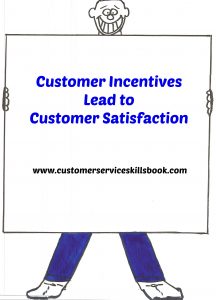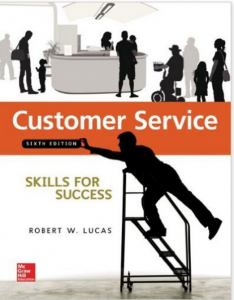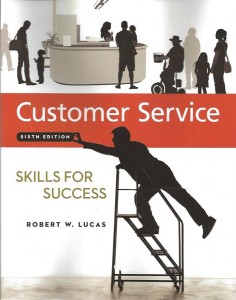Building Customer Relationships by Understanding Them First
Customers come in all sizes, shapes, and descriptions. They all have specific wants and needs and all require a different degree of effort to address customer expectations and achieve customer satisfaction. Before a service representative can attempt to satisfy a customer, they must first determine what the customer expects of them related to products and services being offered.
To develop good customer relations be successful in the customer service profession, you must learn to ask open-ended questions, listen carefully to responses and carefully analyze what your customer tells you before attempting to provide a resolution.
The following are some of the more common customer expectations that you will likely discover in dealing with customers in virtually any type of situation. Keep in mind that since each person is different and unique, you will not be able to apply a cookie-cutter or one-size-fits-all approach to providing service.
Building Good Customer Relations by Identifying Customer Expectations
Expectations Related to People
- Friendly, knowledgeable service providers.
- Respect (they want to be treated as if they are intelligent).
- Empathy (they want their feelings and emotions to be recognized).
- Courtesy (they want to be recognized as “the customer” and as someone who is important to you and your organization).
- Equitable treatment (they do not want to feel that one individual or group gets preferential benefits or treatment over another).
Expectations Related to Products and Services
- Easily accessible and available products and services (no lengthy delays).
- Reasonable and competitive pricing.
- Products and services that adequately address needs.
- Quality (appropriate value for money and time invested).
- Ease of use.
- Safe (warranty available and product free of defects that might cause physical injury).
- State-of-the-art products and service delivery.
- Easy-to-understand instructions (and follow-up assistance availability).
- Ease of return or exchange (flexible policies that provide alternatives depending on the situation).
- Appropriate and expedient problem resolution.
Source: Customer Service Skills for Success by Robert W. Lucas
About Robert W. Lucas
Bob Lucas has been a trainer, presenter, customer service expert, and adult educator for over four decades. He has written hundreds of articles on training, writing, self-publishing, and workplace learning skills and issues. He is also an award-winning author who has written thirty-seven books on topics such as, writing, relationships, customer service, brain-based learning, and creative training strategies, interpersonal communication, diversity, and supervisory skills. Additionally, he has contributed articles, chapters, and activities to eighteen compilation books. Bob retired from the U.S. Marine Corps in 1991 after twenty-two years of active and reserve service.
Make Money Writing Books: Proven Profit Making Strategies for Authors by Robert W. Lucas at Amazon.com.
The key to successfully making money as an author and/or self-publisher is to brand yourself and your company and to make yourself and your book(s) a household name. Part of this is face-to-face interaction with people at trade shows, library events, book readings, book store signings, blogging or guest blogging on a topic related to their book(s). Another strategy involves writing articles and other materials that show up online and are found when people search for a given topic related to a topic about which the author has written.
If you need help building an author platform, branding yourself and your book(s) or generating recognition for what you do, Make Money Writing Books will help. Bob’s popular book addresses a multitude of ideas and strategies that you can use to help sell more books and create residual and passive income streams. The tips outlined in the book are focused to help authors but apply to virtually any professional trying to increase personal and product recognition and visibility.









